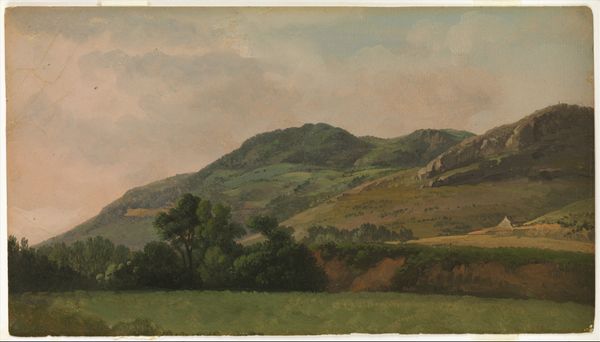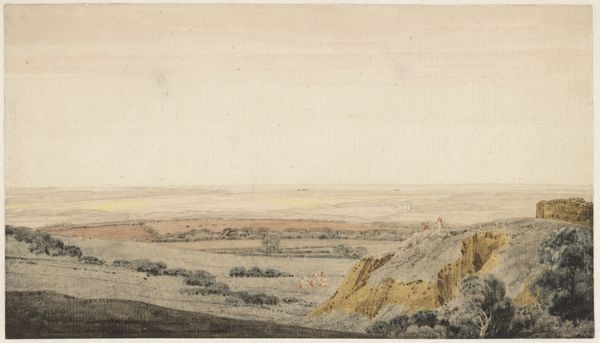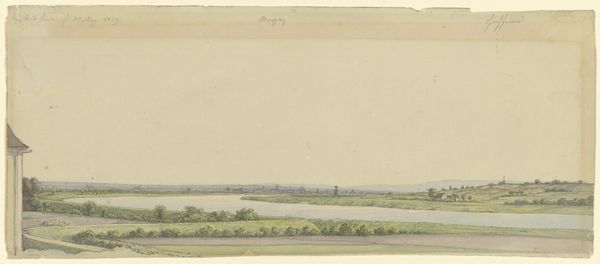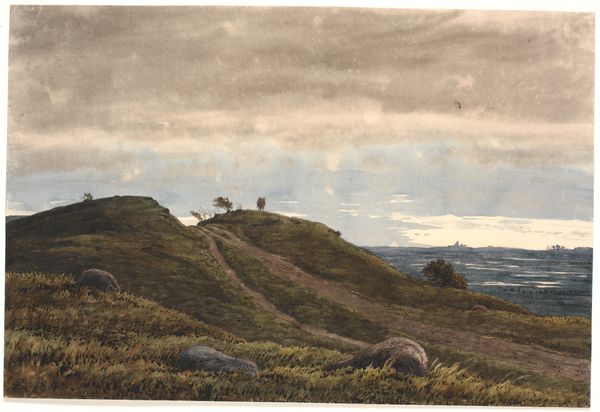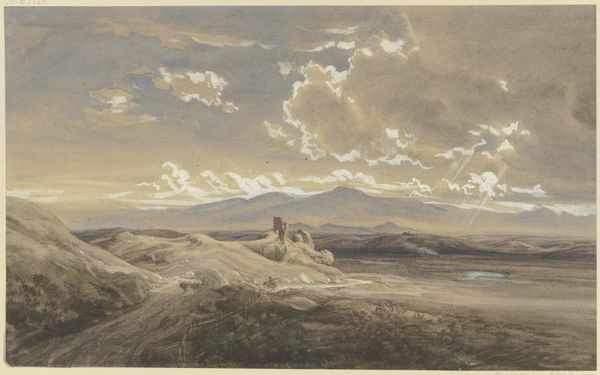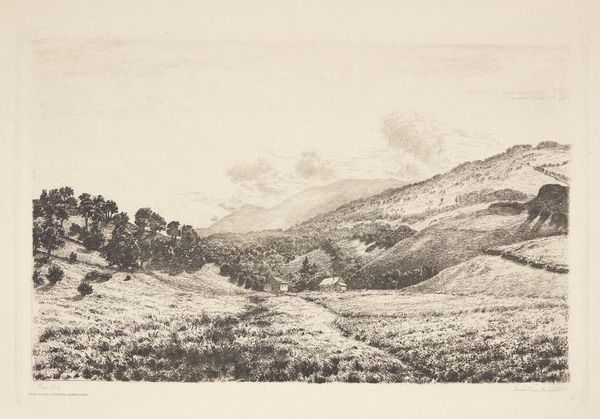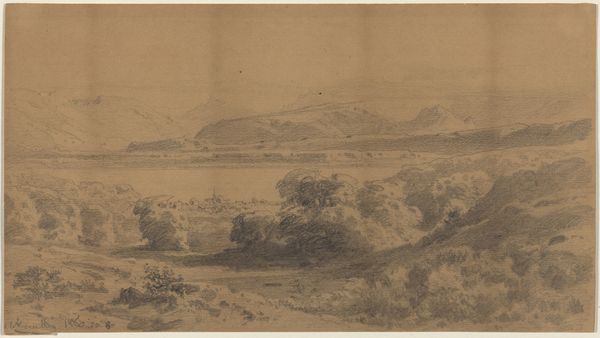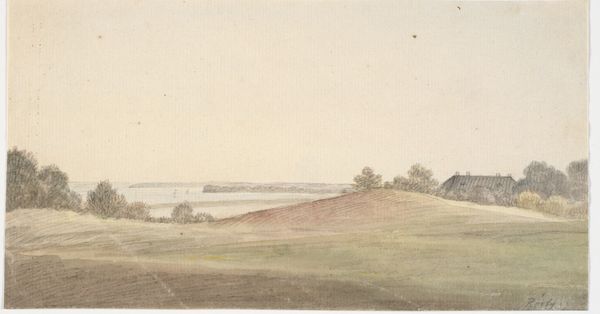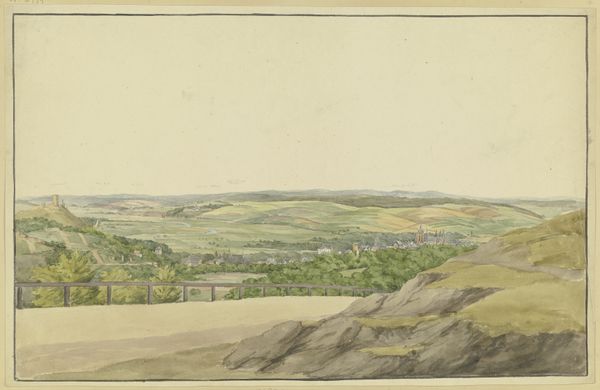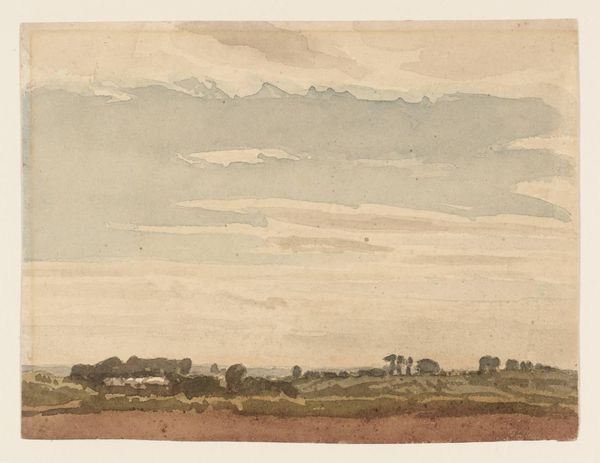
painting, plein-air, watercolor
#
painting
#
plein-air
#
landscape
#
watercolor
#
romanticism
#
watercolor
Dimensions: height 290 mm, width 485 mm
Copyright: Rijks Museum: Open Domain
Editor: Here we have Josephus Augustus Knip's "Gezicht in het dal van Ariccia," a watercolor and paint landscape from around 1809-1812. I'm struck by the quiet stillness, and almost bleached out tones. How do you interpret this work, considering its materials and context? Curator: Given that it’s plein-air, a study painted on location, it presents an interesting contrast to the grand, historical landscapes that dominated academic painting at the time. Note the materiality of watercolor here – how its translucency creates the atmosphere, evoking the very air of Ariccia. Consider also how this portability made art accessible, bypassing traditional patronage systems. Was Knip responding to the evolving market for art, producing sketches for a burgeoning middle class audience with newfound purchasing power? Editor: That’s a really interesting point! It's easy to overlook how the ease of using watercolors could democratize artmaking. But, in what other ways might the painting technique reveal something about this cultural moment? Curator: Well, think about the chemical composition of pigments. Were these colors readily available, or were they recently developed, suggesting an embrace of industrial advancements? And what does the swift application of watercolor imply about the value placed on speed and directness in artistic production? Did this shift alter traditional notions of skill and craftsmanship? Editor: It is so interesting to analyze the process like this and considering the production constraints. Now that I see it from a materialist point of view, I can more clearly appreciate Knip's art. Curator: Indeed. By investigating the materials and techniques of "Gezicht in het dal van Ariccia," we uncover fascinating insights into the artistic, social, and economic context of its creation, while rethinking its place in art history.
Comments
No comments
Be the first to comment and join the conversation on the ultimate creative platform.
